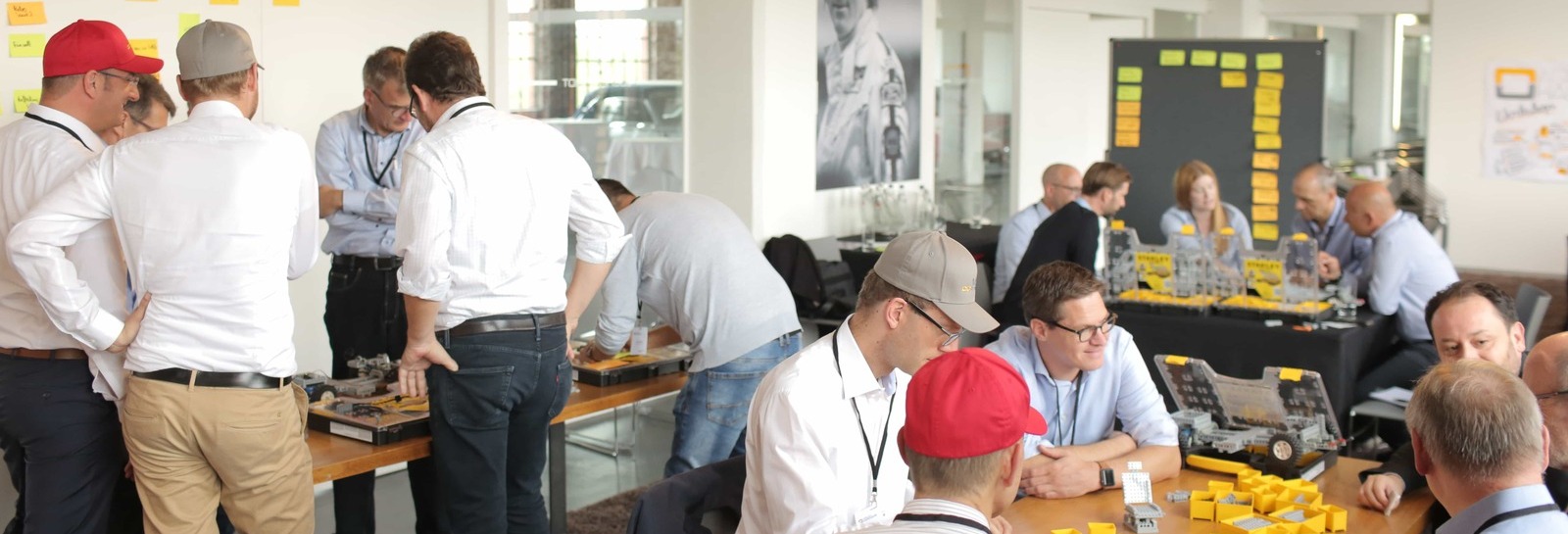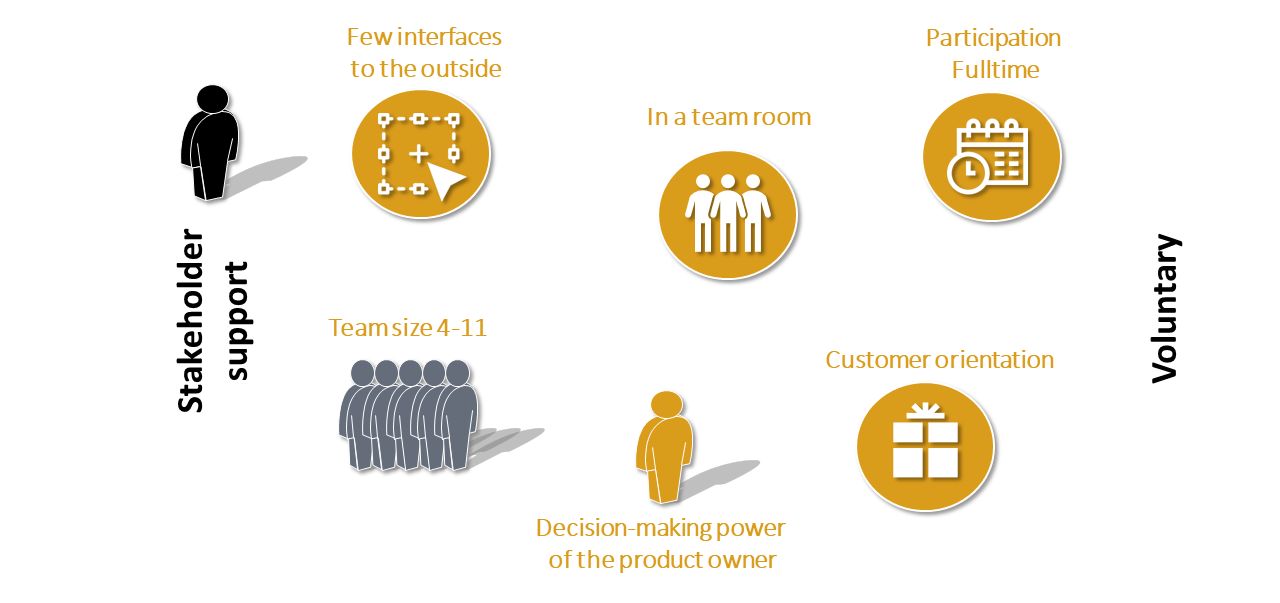Extend agility
You have successfully piloted agile working in one or a few projects and now want to expand this working methodology, perhaps even introduce it universally for all product development projects as well as pre-development projects. This agile expansion requires solutions to challenges in two dimensions. Firstly, setting up many (or all) teams in an agile manner and placing all teams under an agile management- and coordination structure.

Setting up many teams to embrace agility
As for the agile pilot, in essence, the same criteria apply to more teams. However, the more teams are to work with agility, the more difficult it becomes to find solutions for each team that come as close as possible to the “ideal” Scrum.
In practice, two challenges have become particularly common:
Team size – Many employees work on several projects
It seems obvious to adopt a systematic scaling approach as a solution for large teams. But this approach also brings challenges that are often impossible to meet. For example, for every scaled team, you need a Product Owner (exception LeSS) and a Scrum Master, both qualified resources that are rare, especially at the beginning of a comprehensive approach to delivering agility. In addition, full-time participation in an agile team is a real challenge in the initial phase of an agile transformation, as many employees work on several projects.
Lack of voluntary commitment – internal resistance to agility
Resistance to agile working among team members can certainly be a relevant problem if employees are asked to participate in a Scrum team that goes against their inner convictions. While there are numerous “textbook approaches” on how to “win the hearts and minds” of such team members, it is often unclear who has what role in such an agile organisation, where the required qualification lies and what options are available when textbook approaches are exhausted.
This is where the consultants of CO Improve can help, with in-depth experience that has been proven in practice. We place particular emphasis on transferring our knowledge and experience to the new role holders as quickly as possible to make them fit for their new complex challenges.
Placing all teams under an agile leadership and coordination structure
Systematic scaling is always necessary. Even if all teams are working on their own products, common resources must be coordinated and prioritised if necessary. Often, even with mechatronic products, the full decision-making authority cannot be shifted to the team and, therefore, higher-level decision-making authorities must be involved. In addition to the individual agile teams, the various scaling frameworks describe further roles, artefacts and events that are intended to ensure this higher-level coordination and management.
These scaling frameworks differ considerably in terms of how the levels above the agile team are organised and controlled. Some frameworks are very comprehensive and detailed in their description, i.e. they are very prescriptive, while others focus more on principled solution finding, i.e. they are more descriptive. The most widely used frameworks are:
In order to meet the specific needs found in the development of mechatronic products, individually adapted frameworks are often used. In addition, combined frameworks are also deployed, especially in companies where product development projects set up dedicated teams for hybrid products (pure hardware products have become very rare) and pure software products (often this involves cloud-based or app solutions that are to be provided across several mechatronic products). Processes for software development usually need different coordination or management structures than for mechatronic development.
One particular challenge in the introduction of the scaling framework selected and adapted to the individual needs of a company is then also the transformation of the roles at management level. Group-, Departmental- and Divisional Managers transition to Product Owners and Scrum Masters or Agile Coaches at different levels, or to Stakeholders with a technology focus. It is crucial that these roles are clearly described and that the managers concerned are accompanied during the change. Especially when it comes to anchoring agility within the organisation.
The consultants at CO Improve have often accompanied such transformation processes in practice and know what is important. With empathy on the one hand, and with the knowledge of which role has to be lived out (and how), on the other – in order to successfully implement the desired scaling framework – we will accompany you every step of the way.
The benefit to you
- You will experience a smooth transition from classical to agile working for all teams.
- You will have clear structures for coordination and governance in the scaling framework tailored to your needs.
- You will achieve a clean transfer of managerial roles.
- Each and every individual will be brought on board.


